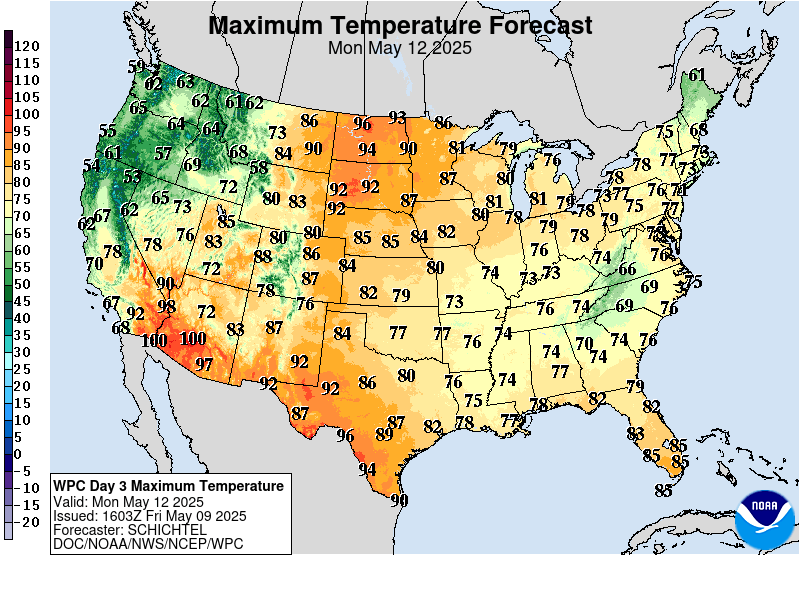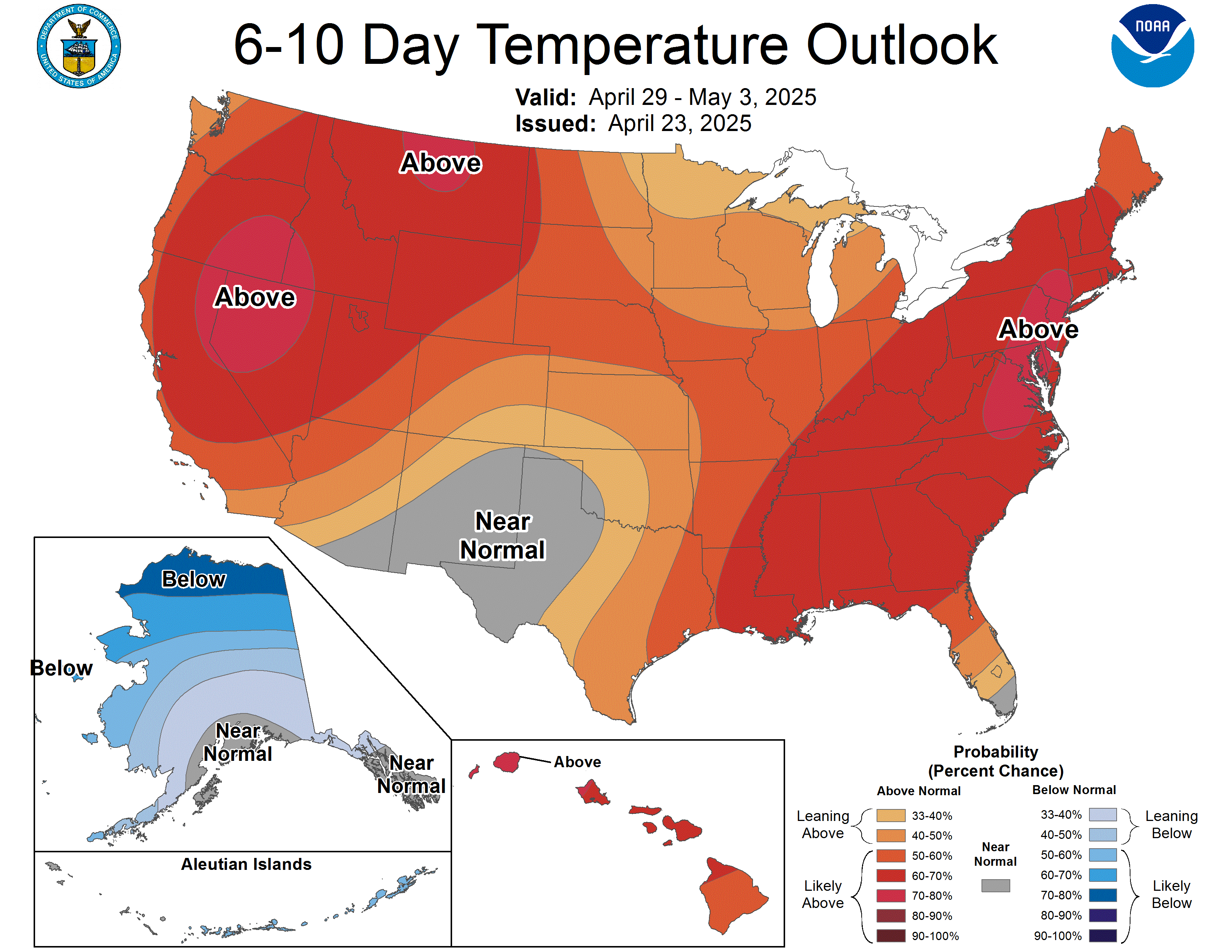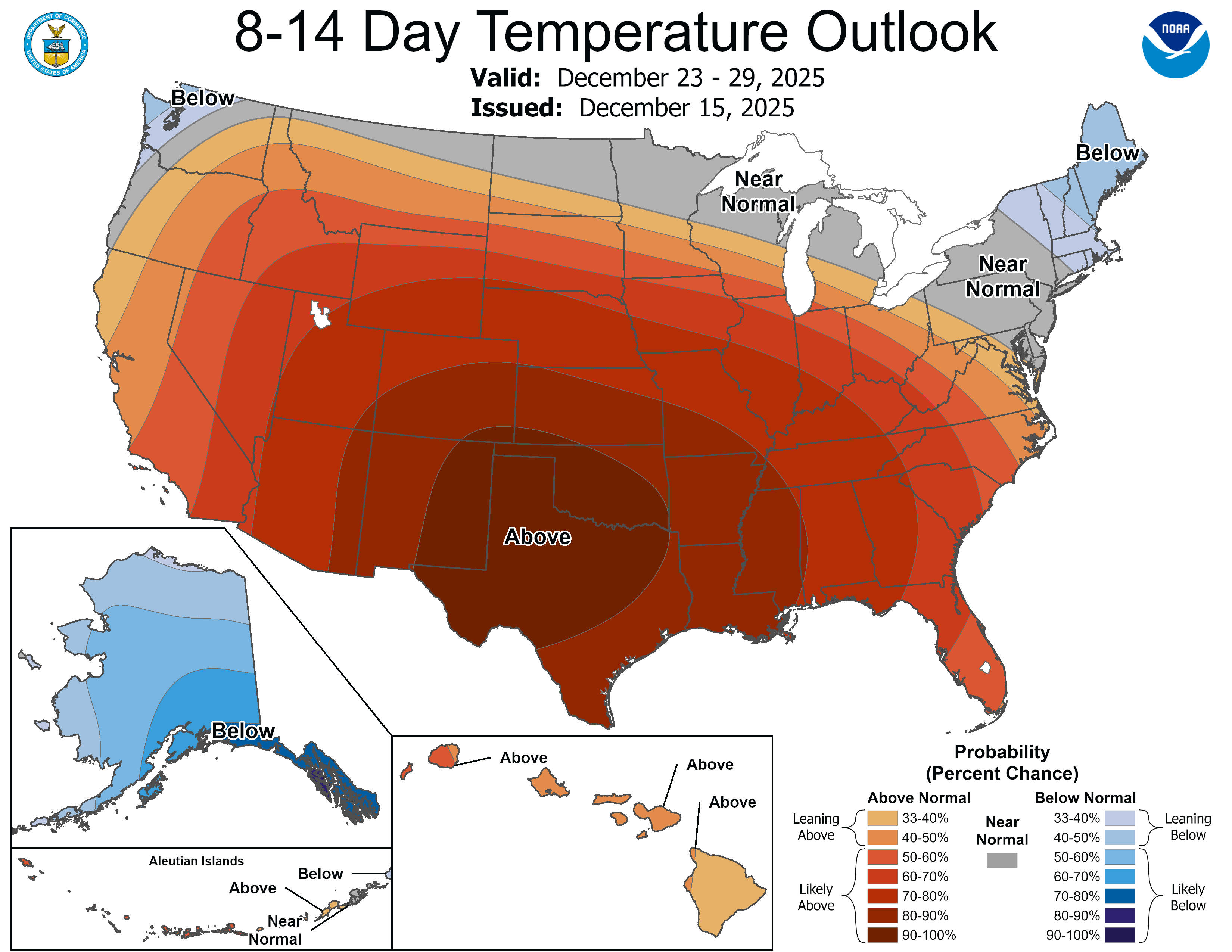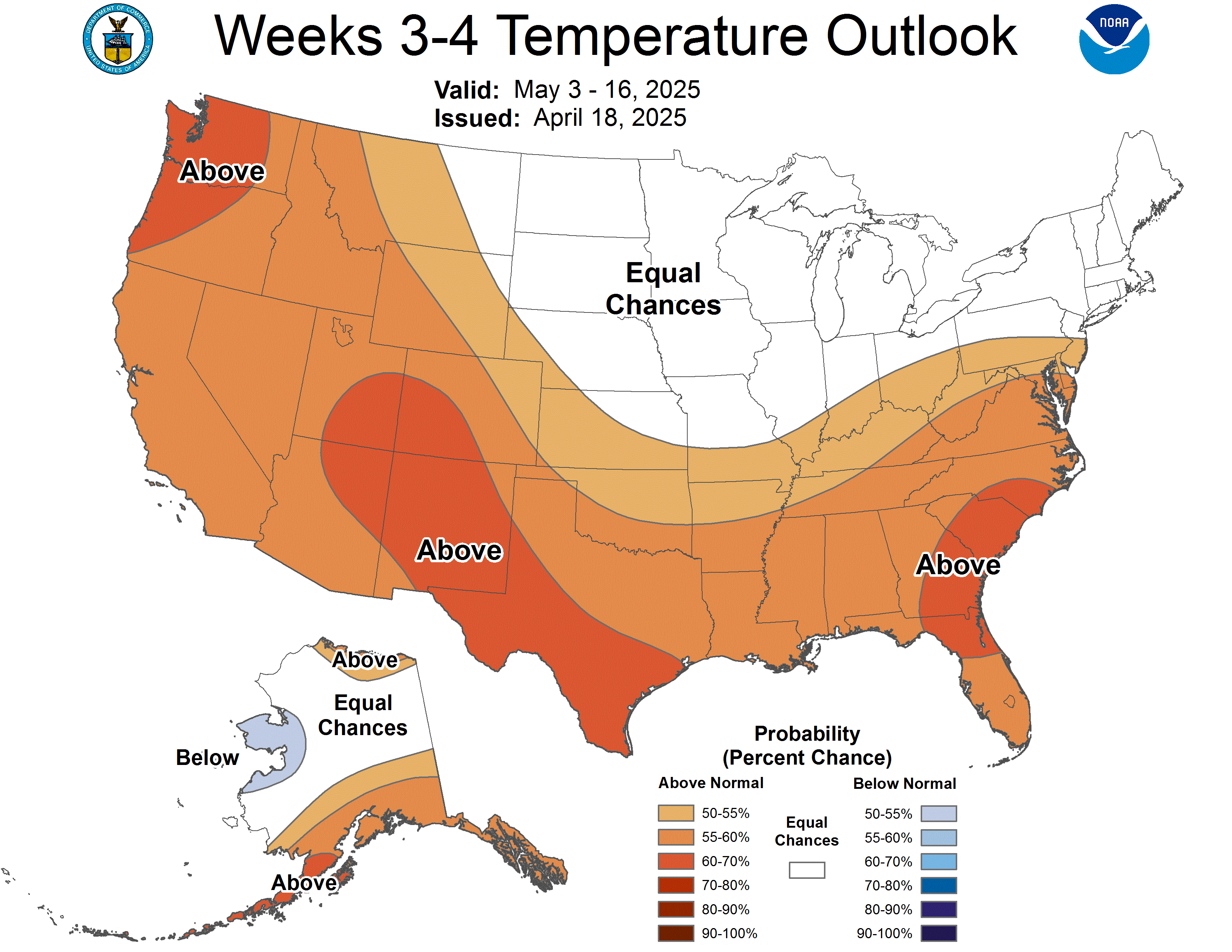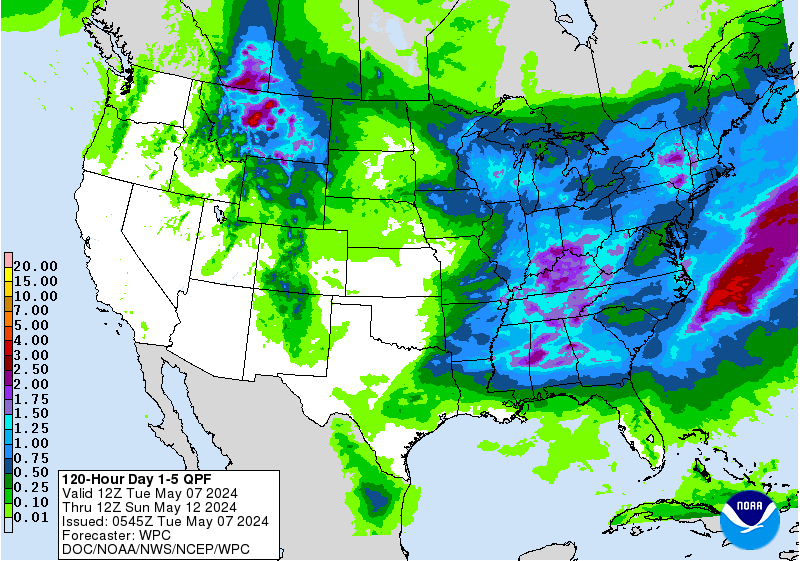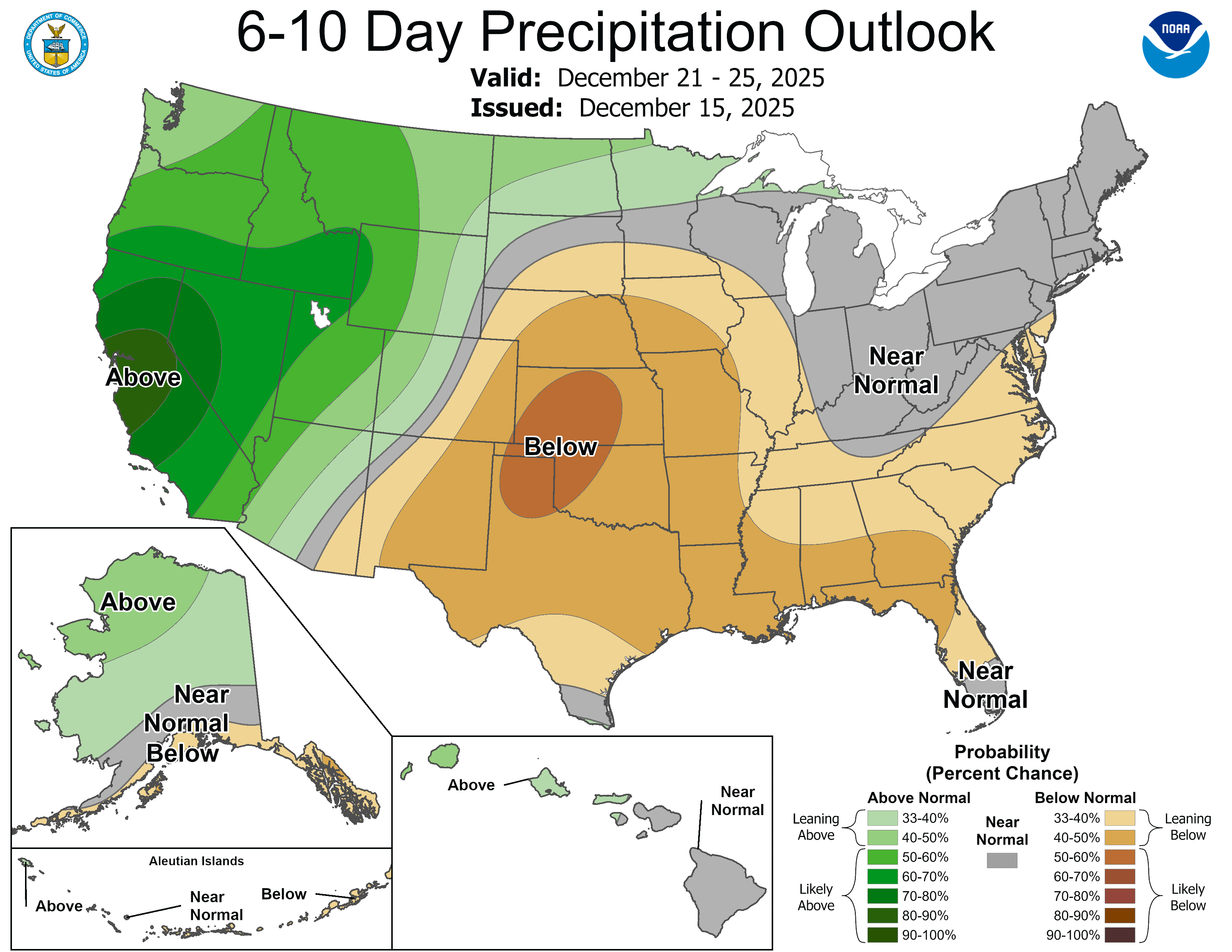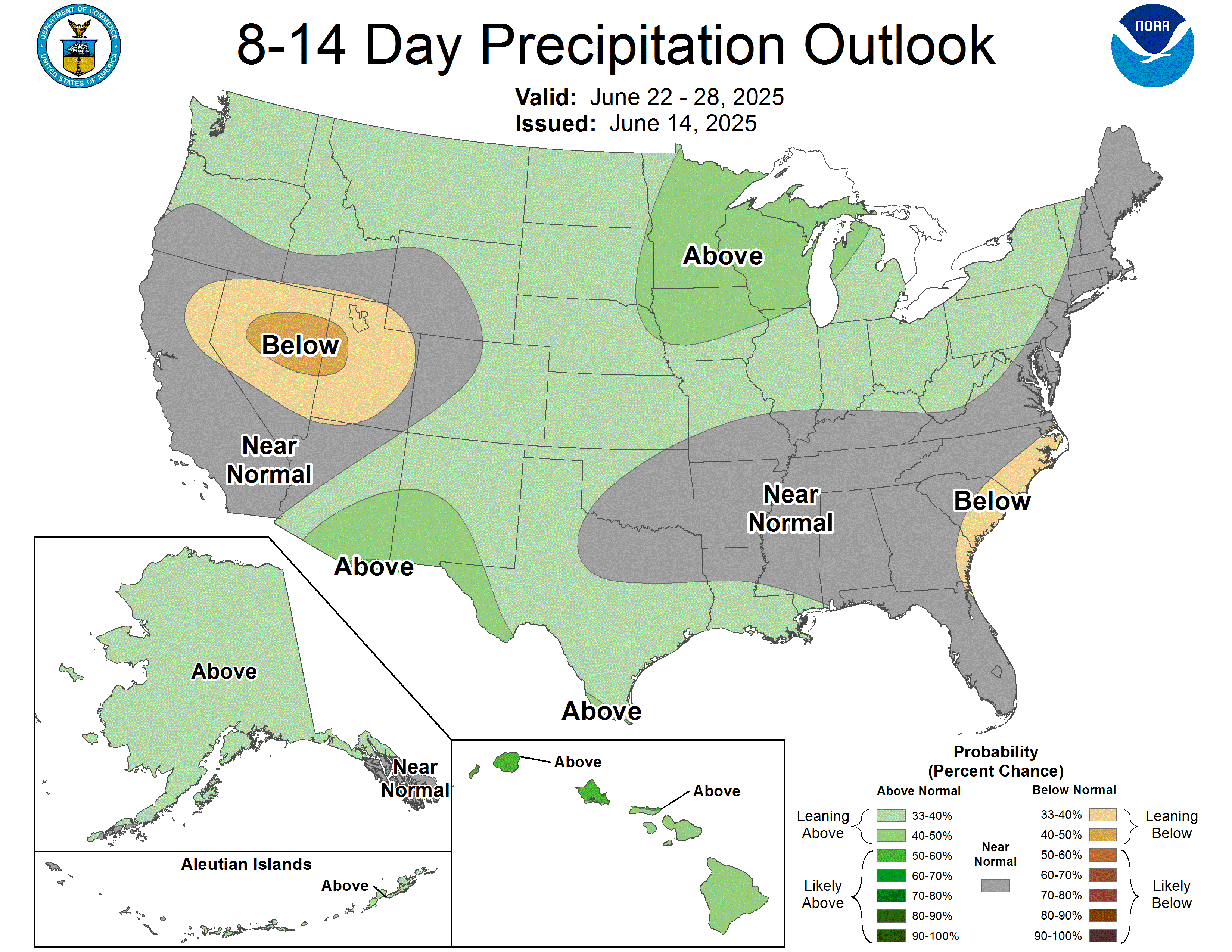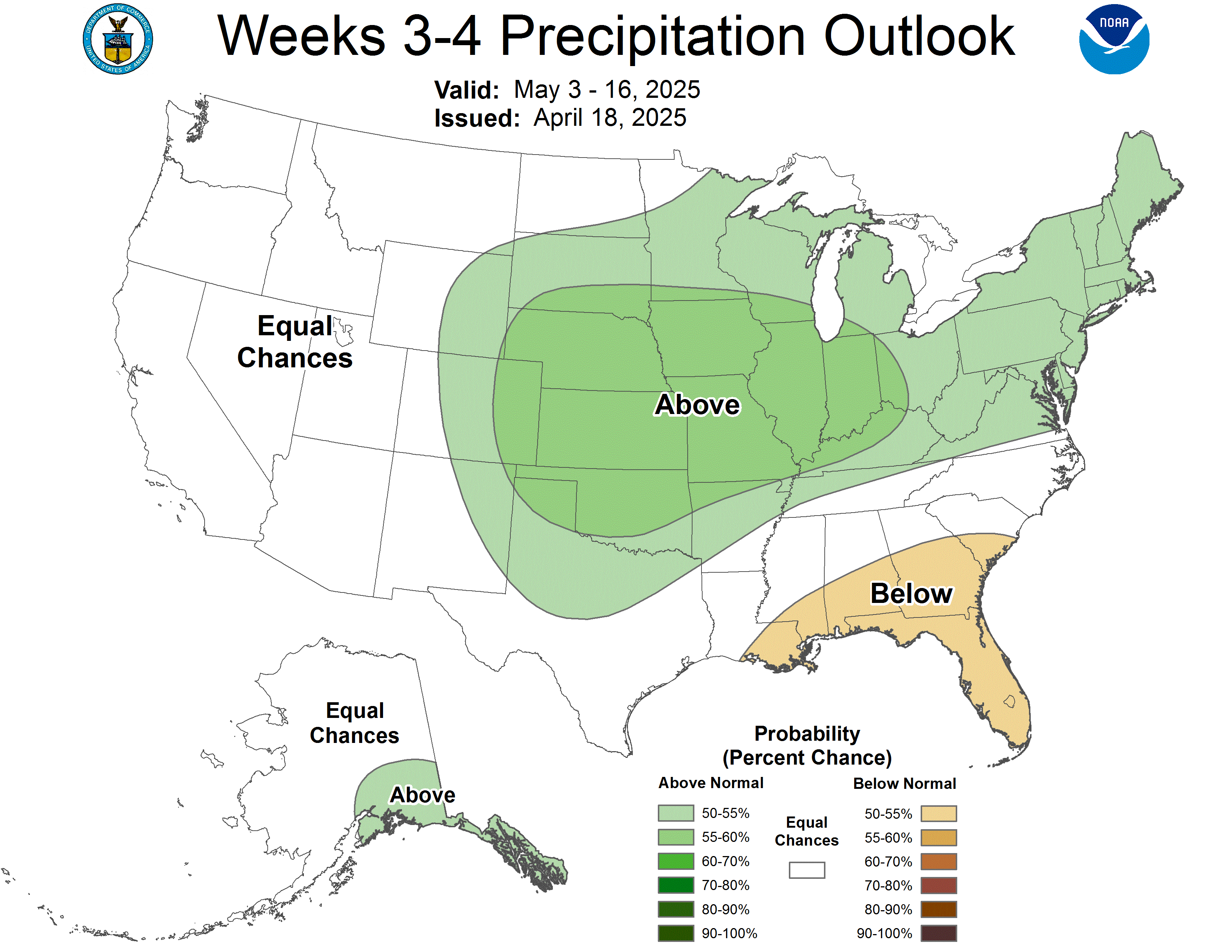Written by Sig Silber
There is so much to cover this week that I thought of publishing Part I and Part II but decided that there is too much going on to ask people to read two weather economics articles. Plus I am not ready to discuss the energy aspect. USDA-NASS published their Executive Briefing and it is very important as for many crops this will be the last report on production for this growing season (but there will be subsequent reports on remaining stocks and prices). It is a positive report but not as positive as it seemed two months ago.
Please share this article – Go to the very top of the page, right-hand side, for social media buttons. Please feel free to send this article to anyone who you think might benefit from reading it.
This is the week that NOAA updates their ENSO forecast which will be used next week to guide the update of their four-season outlook and we have provided that report. And of course, this article contains the intermediate-term weather forecast. It looks like we will have a week or so of weather more characteristic of winter. It may be short-lived but we will know more about that when NOAA issues their Early Outlook for February next Thursday. We will publish that on Thursday night or Friday night. If you are interested in crops, you will want to read the NASS Executive Briefing which we have included in full in this article.
From Friday’s 6 – 10 Day Forecast.
Increased chances of below normal temperatures are forecast for much of the western half of the CONUS associated with the troughing forecast over the region. Below normal temperature probabilities are also elevated across parts of the Northern Plains and Upper Mississippi Valley, where although relatively warmer temperatures are forecast early in the period, a trend toward cooler temperatures is forecast by day-10. Increased probabilities for below normal temperatures are also forecast across parts of the Northeast, supported by teleconnection analysis with the mid-level height anomaly center over the western Atlantic. Above normal temperature probabilities are elevated across parts of the south-central and southeastern CONUS underneath above normal heights and consistent with the ECMWF and GEFS reforecast tools. Enhanced probabilities of above normal temperatures are forecast over much of Mainland Alaska and the Aleutians due to predicted southerly surface flow and underneath above normal 500-hPa heights. Surface high pressure forecast across western Canada favors enhanced easterly flow and elevated chances for below normal temperatures over the Alaska Panhandle.
Several shortwave disturbances are forecast to propagate through the mean trough axis across the west and eject into the Plains. While none of these disturbances look to become particularly strong, they will bring elevated chances of precipitation, resulting in the increased probabilities for above normal precipitation over much of the CONUS. The highest probabilities (>60%) are over parts of the Southwest, supported by the ECMWF and GEFS reforecast tools as well as teleconnection analysis with the negative height anomaly center over the western CONUS. Below normal precipitation is favored for parts of the Northeast and the Florida Peninsula, far enough displaced from the mean storm track and consistent with the consolidation forecast tool. Weak troughing is predicted over the western Bering Sea which is likely to result in southerly to southwesterly onshore flow throughout much of Mainland Alaska and parts of the Aleutians, where enhanced probabilities of above normal precipitation are forecast. Below normal precipitation is favored for parts of southeastern Mainland Alaska and the Panhandle underneath above normal mid-level heights.
Now let us look at the NOAA ENSO Update
NOAA depends a lot on the IRI-CPC analysis.
And here is one more graphic that I created from a different NOAA source. It is a cross-section of the Pacific Equator from the surface down to 450 meters. What is shown in this graphic is the temperature anomalies not the absolute temperature. ENSO is measured at the surface since only the surface interacts with the atmosphere. But the future of the surface often is impacted by the water below the surface. At some point, NOAA will update the normal values for this area as they do that every five years but I do not think they have done so yet.
Now let us look at the NASS Executive Briefing.
Now we will look at individual crops with more emphasis on corn, soybeans, cotton, and wheat.
Now we switch to more summary information.
Now we shift from production to stocks (inventory).
Severe Weather
There is some snow. But looking ahead to Spring runoff it does not look good
And there have also been high temperatures
This is a different part of the U.S.
Let’s look at the current drought situation.

And the week to week change

Here we look at four-time periods: one week, one month, six months, and a full year.
The result is very dry soil conditions
January Drought Outlook

Intermediate-Term Weather Forecast
Showing from left to right, Days 1- 5, 6 – 10, 8 – 14, and Weeks 3 – 4 You can click on these maps to have them enlarge. Also, the discussions that go with these forecast maps can be found here (first two weeks) and here (Weeks 3 and 4).
First Temperature
And then Precipitation
The Week 3-4 Discussion is always interesting.
Week 3-4 Forecast Discussion Valid Sat Jan 30 2021-Fri Feb 12 2021
This week’s forecast is based on a blend of dynamical guidance and expected La Nina conditions. The Madden Julian Oscillation (MJO) is weak and most guidance predicts it to remain weak throughout the next couple of weeks. La Nina, however, remains strong. Persistent negative OLR anomalies, corresponding to anomalous convection, have been present over the Maritime Continent for months now. The anomalous convection has resulted in positive height anomalies to its northwest, which forms the basis of a Rossby wave that extends from southeastern Asia northeast over North America. This pattern resembles a typical La Nina, though isn’t a direct match to a climatological La Nina composite, particularly since the anomalous trough and ridge couplet over central Pacific are more zonally oriented than in the composites. Still, dynamical model forecasts feature strong height anomalies over the Pacific and northwestern North America.
The CFS, ECMWF, JMA, and GEFSv12 operational models all forecast a wide swath of anomalous ridging centered over the Central Pacific, a relatively small anomalous trough over the northwestern U.S., and anomalous ridging over the southern U.S. and Northeast for both Weeks 3 and 4. The largest discrepancy lies in the anomalous ridge over the Northeast during Week-3. The CFS forecasts anomalous ridging along the East Coast, whereas the GEFSv12, ECMWF, and JMA both predict near-normal to negative height anomalies throughout Northeast. All three models are in agreement with anomalous ridging over the Northeast during Week-4.
Today’s Week 3-4 forecast features below normal temperatures favored throughout most of Alaska and the Pacific Northwest and aligns well with the aforementioned predicted troughing. Increased chances for above normal temperatures are forecast throughout the Southwest and Southcentral U.S., which resembles a climatological La Nina pattern and matches the forecast anomalous ridging. The forecast throughout the Eastern U.S. is especially uncertain with significant model disagreement regarding the sign of temperature anomalies, leading to an equal chances forecast.
Negative precipitation anomalies are forecast over all of Alaska, with the highest probabilities found along the South Coast and Aleutians where nearly every piece of model guidance predicts anomalous dryness. Negative precipitation anomalies also extend from southern California throughout the southern third of the country to Florida. Anomalous precipitation is expected throughout the northern tier of the CONUS, with the highest probabilities over the Pacific Northwest and Great Lakes regions. There is some evidence in the SubX models that there will be an active storm track throughout the Eastern CONUS during Weeks 3-4, but there is not much support for this in our operational model suite. This was also the region that exhibited the most variance among 500-hPa height anomaly forecasts.
Sea surface temperature anomalies are above normal surrounding Hawaii, resulting in elevated probabilities of above-normal temperatures during the Week 3-4 period. Dynamical models also agree on a forecast of slightly above-median precipitation values.
International
This week we do have a map.
In the box are shown the major resources we use. We will not be using them all each week but the reader is welcome to refer to these resources.
Major Sources of Information Used in this Weekly Report
|
.

































































